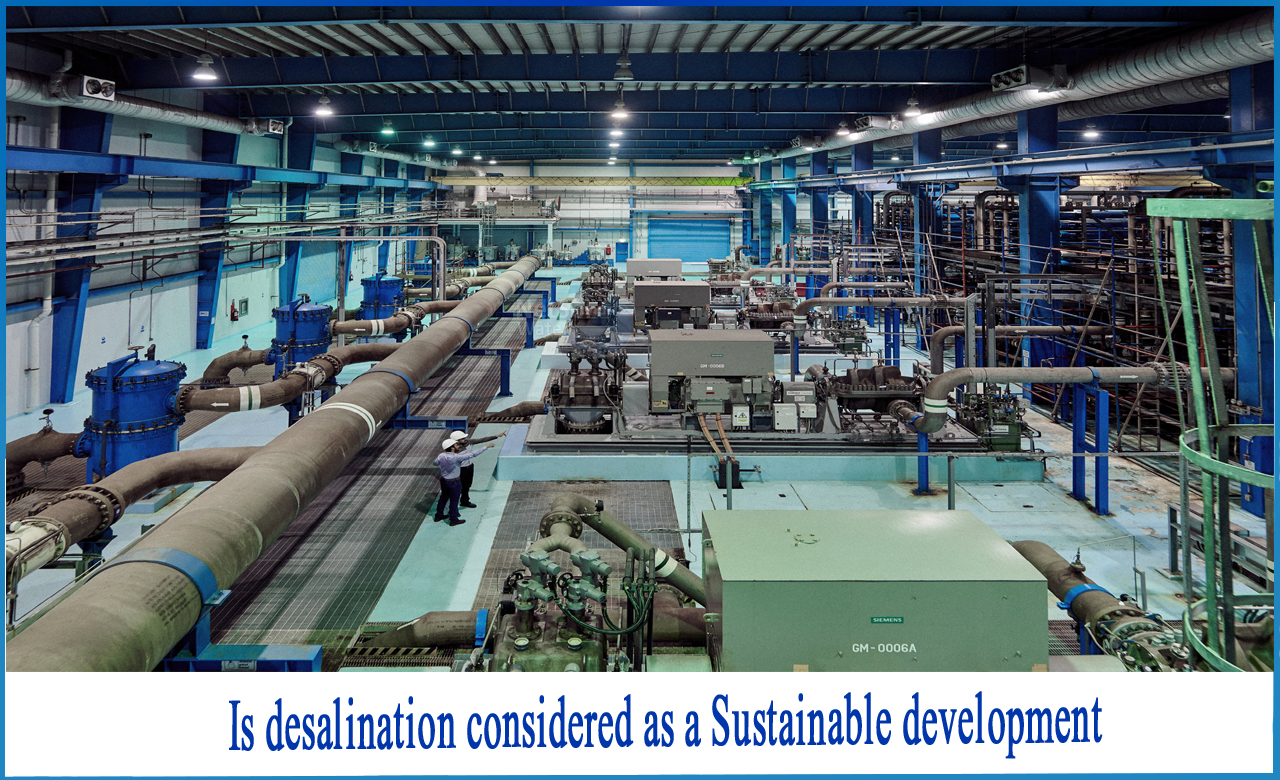Is desalination considered as a Sustainable development?
Sustainable development necessitates the availability of adequate freshwater supplies. Desalination can be used for long-term water supply if the impact of desalination processes on carbon emissions and the environment is minimized. With the advancement of desalination technology, it has become an important freshwater supply capable of meeting the objectives of sustainable development.
The advancement of seawater reverse osmosis (SWRO) technologies has reduced the amount of power consumed during the desalination process. A low-pressure SWRO membrane system uses less energy than standard desalination systems and hence has a lower environmental impact.
Reassessing the sustainability of desalination: It's time to think again!
Over the last two decades, experts have paid close attention to the environmental impact of various desalination processes. As a result, concepts like as greener desalination, green desalination technology, and natural resource protection have arisen.
It is startling and somewhat disconcerting that the primary focus of sustainable desalination is on energy consumption reduction. The possible repercussions of desalination are not adequately addressed at all phases, including intake, pre-treatment, the desalination process itself, cleaning, and, most crucially, the unwanted output, i.e., brine. However, the decision on the sustainability of desalination must be based on a well-established environmental life cycle analysis (LCA) as well as broader socio-economic considerations.
Consumption of saline water
Depending on their location and intended use, desalination facilities may get feed water from a variety of sources. Intake pipes are placed during the building of seashore desalination facilities to obtain salt water from the ocean or sea. This installation clearly disrupts the seafloor and marine life.
When assessing the sustainability of desalination, failing to account for the effect of the input process may result in an incorrectly higher total sustainability score. Unfortunately, these negative effects receive little attention and are frequently overlooked in favour of emphasizing the reduction in energy demand.
The intake stage is the first in the desalination process and should be regarded as the first step towards attaining sustainable desalination. Improvements to the intake infrastructure and provisions will necessitate investment.
Consumption of energy
There is no question that the desalination business is interested in decreasing energy usage and has shown signals of switching to or attempting to move to renewable energy sources. There has been a noticeable push to upgrade the technology and integrate renewable energy into the process.
A lowering of 20% over a decade or so is simply not enough effort. It is critical to have a net-zero environmental impact by reducing CO2 and other greenhouse gases (GHGs) linked with energy consumption in desalination.
Chemical contribution
The quality of any process's output is determined by the quality of its inputs. The desalination process is no exception, and the features of the discharge from desalination facilities are inextricably determined by the input feed water and the chemical input throughout the desalination process.
Consumables and spare parts
The desalination business is not paying much attention to the impact of manufacture and, eventually, disposal of materials, equipment, replacement parts, and consumables.
To increase the sustainability of desalination processes, the industry is encouraged to develop clear policies and management alternatives for all parts and consumables that reach the end of their useful life.
Brine discharge
All desalination operations produce brine, which is a waste fluid with a high salinity and numerous dissolved minerals. The detrimental effect of brine on marine environments is undeniable, as brine has a high salinity that is 1.5 to 2 times that of saltwater. Furthermore, the temperature of brine might exceed that of saltwater, which has a negative impact on aquatic life. As with the intake, major investment is required to improve the discharge infrastructure as well as the brine properties to offset the negative impact on the ecosystem.The discharge infrastructure's design and construction might be improved by building better facilities for greater mixing at the discharge point to dilute the brine and optimize the rate of brine discharge. Changing the properties of the brine before discharge could be the key to more sustainable or environmentally friendly desalination.
Conclusion
The desalination sector has made tremendous progress in decreasing its energy use in order to increase its sustainability credentials. However, far too little attention is paid to the detrimental impact of many steps, including as intake, pre-treatment, chemical input, and, most crucially, the destructive outflow, brine. It is argued that the sustainability of desalination should not be based exclusively on cost savings from reduced energy use or the use of low-carbon power. Rather, it should be built on a comprehensive strategy that encompasses all components of the process.
What do we offer?
Netsol Water is a renowned producer of water and wastewater treatment plants. We have a reputation for being the top commercial RO plant manufacturer, industrial RO plant manufacturer, sewage treatment plant manufacturer, effluent treatment plant manufacturer, and much more. Aside from that, our USP is 24x7 customer assistance.
For further inquiry, or product-purchase-related questions, give us a call on +91-9650608473 or email at enquiry@netsolwater.com.



